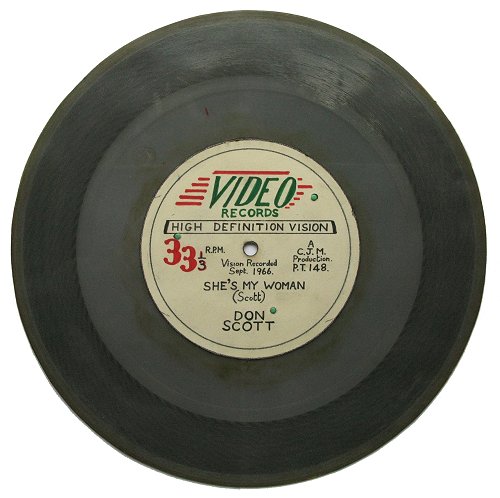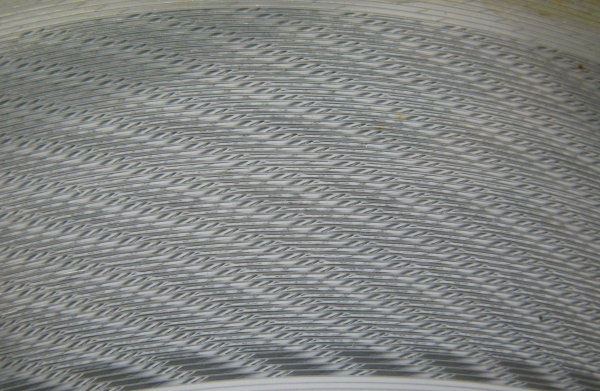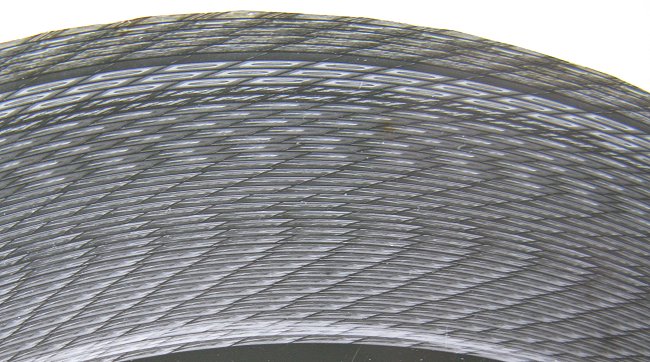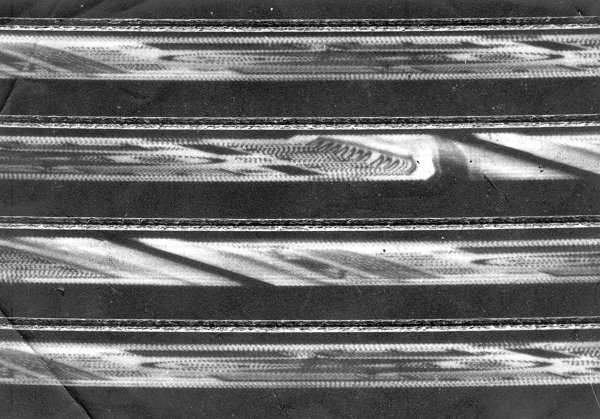|
Background
The 1950s and 1960s were exciting times
for the booming British electronics industry, which produced
a wide range of innovative products for the domestic market.
From 1950 until the late 1960s there were many developments
that greatly affected people’s lives, and led to our
dependence on electronic forms of entertainment.
Some of the milestones were as follows:
|
In June 1950 the Decca
Record Company launched the country’s first
33⅓ rpm long playing record, and in 1952 EMI
introduced seven inch 45 rpm singles. In
September 1958 EMI launched stereo long
playing records.
The high quality vinyl
records led to an interest in sound
reproduction, leading to a successful
British hi-fi industry, and the introduction
of VHF/FM radio in 1955.
In the early 1960s
experiments in colour television were taking
place, and in April 1964 625 line monochrome
broadcasts began on BBC2. In the early part
of 1967 the BBC began colour test broadcasts
of some scheduled programmes, in readiness
for the start of the regular service, which
was launched in July 1967. |
|
At this time Britain had a vast
domestic electronics industry, ranging from the large
manufacturers, through to the local TV repair and rental
shop. Large numbers of skilled people worked in the
industry, and there was a great demand for places on the
electronics courses that were run in local technical
colleges. Many people built their own equipment at home,
ranging from televisions, to radios, hi-fi, and record players.
In almost every town there was at least one electronics shop
selling components, second-hand equipment, government
surplus items, and electronic kits.
Many people designed their own radios,
record players, and even televisions, and sometimes sent
articles to the many popular electronics magazines, where
they were published in a serial form that allowed almost
anyone to build them. Electronics became a popular hobby,
which led to much innovation, and development. One such
innovator was Colin Mason who developed an early form of
video disk.
Development of the disk
Colin Mason ran Rapid TV Services which was
based at 49-51 Derry Street, Wolverhampton. He repaired televisions
of all makes, and offered an electronic equipment design and
manufacturing service. From the same premises he ran Midland Recording
Studios (Wolverhampton) Limited where he made demonstration discs
and master recordings of pop groups that were of a high enough
standard to be accepted by many of the major record companies.
|

| Colin lived with his wife Joyce at Finchfield
Hill, Wolverhampton, and over a period of 18 months or so developed
an early form of videodisk designed for use in a video jukebox. |
|

Colin in his workshop. |
Audio/visual jukeboxes had been around since
the late 1930s. They used back projection from a 16mm or Super 8mm
film projector onto a screen at the front. They never really caught
on in this country, but were quite common in Europe and America.
By the early 1960s television transformed the
way that we viewed our favourite stars thanks to such shows as
Six-Five Special, Oh Boy, Ready Steady Go, Thank Your Lucky Stars,
and Top of the Pops. The time was right for the introduction of a
video jukebox, and Colin Mason began to develop a unique, and
potentially popular product.
As already mentioned, electronics magazines
were extremely popular with enthusiasts. During the early 1960s
several articles appeared which described the working of a flying
spot scanner, used by the BBC to electronically scan 16 or 35mm
films for broadcast. The film was scanned by a focussed spot that
moved across the face of a cathode ray tube.
It could well be that
Colin Mason saw one of the articles, and realised that the system
could be adapted for use with an optical disc. |
| How it worked The videogram appears to have worked in the
following manner. It is basically a flying spot scanner, with a
fixed cathode ray tube, and moving optics.
The ten inch disc was made from a sandwich of
transparent plastic material that included a layer cut from a piece
of photographic film, which would have been suitably exposed in a
recording machine, and processed in a dark room. It seems likely
that the recording machine was almost identical to the player,
except that the flying spot scanner tube would have been modulated
by a series of pulses produced from the source video.
|

| Each disk was produced to work with a specific
seven inch, 33⅓ rpm vinyl record, which sat on top of the videogram in a
depressed area, resting on three small anti-slip feet.
The video
information was recorded on the outer part of the videogram, that
sat above a transparent section of the turntable.
The seven inch disc was played in the
conventional manner with a tone-arm holding a cartridge.
The arm was
mechanically coupled to a lens which focussed the image from the
flying spot scanner onto the top surface of the videogram, and a
photomultiplier tube beneath the turntable, that converted the
modulated light beam into an electrical signal. |

A ten inch videogram. |

A close-up view of the video information on
the videogram above.
|

A later seven inch videogram. |
During recording, the video information
frequency modulated a 6 MHz carrier to a maximum deviation of plus
or minus 4 MHz.
The resulting carrier was half-wave clipped, and
clipped at the top to produce an approximate square wave, which
triggered a monostable multivibrator.
This provided a train of pulses
which were mixed with peak whites and peak blacks from the video
source.
Although the aim was to produce a series of pulses, the
grain size of the photographic emulsion led to a form of gradual
density modulation, rather than discrete pulses. |

A close-up view of the seven inch videogram.

A closer view of a 7 inch
videogram showing the video information and the grooves.
Courtesy of Graham Griffiths. |
|
During playback the optical part of the
videogram was scanned by the flying spot scanner tube, and tracked
by the tone-arm, following the groove in the seven inch record, in a
conventional manner. The signal from the photomultiplier was
amplified, and fed to a standard video output socket.
Marketing and sales
Colin Mason had high hopes for his invention.
He believed it could be a great export success, and hoped to receive
about £3,000,000 annually from royalties. He applied for a patent in
the names of himself, his wife, and Mr. J. D. Hoppett, and Mr. N. P.
Stead, proprietors of Wolverhampton Radio and TV Supplies in
Darlington Street.
He gave a demonstration to Decca, which must
have gone well because he received telegrams from Sir Edward Lewis,
who ran Decca, expressing interest in the videogram. Unfortunately
for Colin, Decca developed their own capacitive system called 'Teldec'.
An article about Colin and his videogram
appeared in Practical Television magazine, and so Colin must have
had high expectations for the project. He also planned a postcard
version of a video disk, and had the idea of developing a machine to
show photographs on TV. Users would be able to insert their film
negatives into the machine which would be connected to their
television.
For some years Colin ran Telford Electronics in
the shopping precinct at Anstice Square, Madeley, Telford, selling
Decca TVs, records, and carrying out TV repairs. Although the
business was initially successful, it eventually failed. He hoped
that it would fund any future inventions. At the time he lived at
Sutton Hill, Telford.
|
| Unfortunately the videgram was not to be. None of the
British manufacturers were interested, so he turned his attention to
America, and eventually signed a contract in New York with Cinerama
Inc. of Hollywood.
Cinerama however had no interest in jukeboxes,
and were interested only in the technical side of the invention.
They provided financial support for development work to bring the videogram up to an acceptable standard, and would have greatly
profited from sales of the product, had it reached its full
potential. |

| Colin and his
prototype player. The image on the television
screen is from the player. |
|
|
Although there was at least one working
prototype, there were still problems to be ironed-out, including
insufficient resolution. Which is possibly why manufacturers showed
little interest in the system.
Final developments
A number of improvements had been planned.
Experiments were carried out with non-continuous tone emulsions,
such as lith film to reduce video noise. Plans were also in hand to
improve frame and line synchronisation by the inclusion of sync
pulses that could be read by a photo transistor, to synchronise
successive lines to within plus or minus one microsecond. Colin also
developed a seven inch version of the videogram.
It seems likely that had a manufacturer shown
sufficient interest, development work would have continued to
produce a saleable product. But as no interest was shown, the
project was eventually abandoned. We have to admire Colin for
producing a new and innovative design, which under different
circumstances might have revolutionised the British jukebox
industry.
Another of Colin's inventions was an ash tray
with a small cigarette holder in the centre. A lighted cigarette
could be placed in the holder, where it would burn very slowly, and
emit no noxious fumes. Again, no interest was shown in the product,
but this was because of our modern attitude towards cigarettes,
which are no longer fashionable.
Sadly Colin Mason died a few years ago at the
age of 71.
I would like to thank Colin Mason's long time
friend, Bob Aston for providing some of the information for this
article, and also another of Colin's friends, Graham Griffiths who
was also extremely helpful.
|
 |
Return to
the Museum |
|